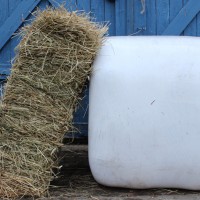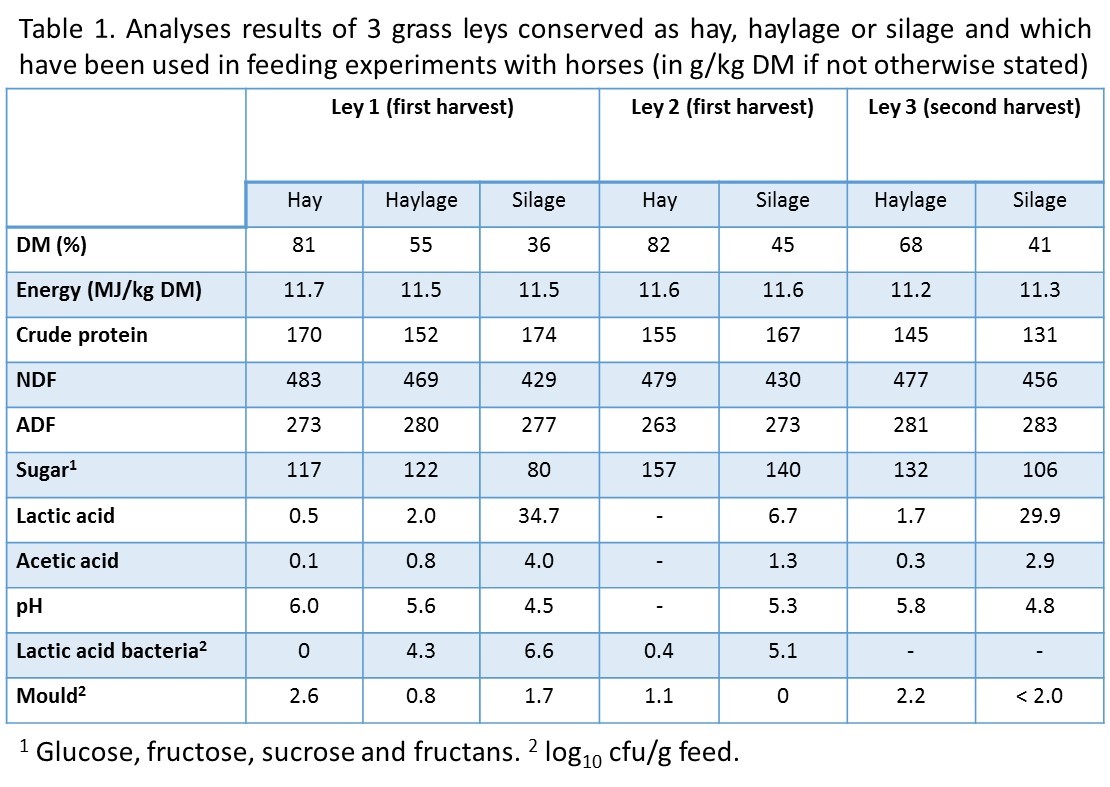Hay, haylage, silage – what’s the difference?

Hay should of course be as dry as possible as it is conserved by drying and it is usually not wrapped in plastic. There is no clear definition separating haylage and silage. Today the most common definition is that haylage is drier than silage, and some haylage is so dry it is hay wrapped in plastic.
In the feeding experiments presented on this website forage with dry matter (DM) concentrations between 50-70% are called haylage and between 35-50% are called silage. Table 1 show some analyses results of 3 grass leys, which were used in feeding experiments with horses, conserved as hay, haylage and silage. Within each ley the feeds were harvested on the same day; to be able to see the effects of the conservation method only the forages compared must be from the same ley and be harvested simultaneously.
The conservation method has an impact on the chemical composition of the forage. In drier forage, like haylage and hay, there is less or no lactic acid fermentation and the pH value then becomes higher. During silage/haylage making the rate of fermentation depends on the amount of moisture present in the ensiled crop. Wilting delays the bacterial multiplication and leads to higher pH and sugar content. One can say that the lactic acid producing bacteria in the silage “eats” the sugar.
Lower concentrations of nitrogen and higher concentrations of the fibre fraction NDF in hay compared to silage harvested simultaneously have also been reported. This can be due to larger leaf losses during handling in the field; during haymaking the crop is wilted longer and the finer more nutritious leafs become more brittle, falls off easier and get left on the ground.
The conservation method has some impact on the horse; effects have been measured for digestibility and for the horse’s water intake and fluid balance but not for the horse’s performance.
Silage production implies that feed is conserved through an ensiling process. The ensiling process means that lactic acid producing bacteria, LAB, produces lactic acid during carbohydrate degradation. The lactic acid lowers the pH value in the feed and the goal with the ensiling process is to lower the pH enough to inhibit all microbial activity and the silage is then stable for storage during air tight conditions. For the lactic acid bacteria to dominate the ensiling process anaerobic conditions are required in the bales or the silo.
Sara Muhonen, AgrD
References
McDonald P. 1981. The biochemistry of silage. Wiley J and sons, Ltd (eds), Chichester, UK.
Honig H. 1980. Mechanical and respiration losses during prewilting of grass. In: Proceedings of a Conference on Forage Conservation in the 80’s. Occasional Symposium No 11. British Grassland Society, Berkshire, UK, pp 201.

